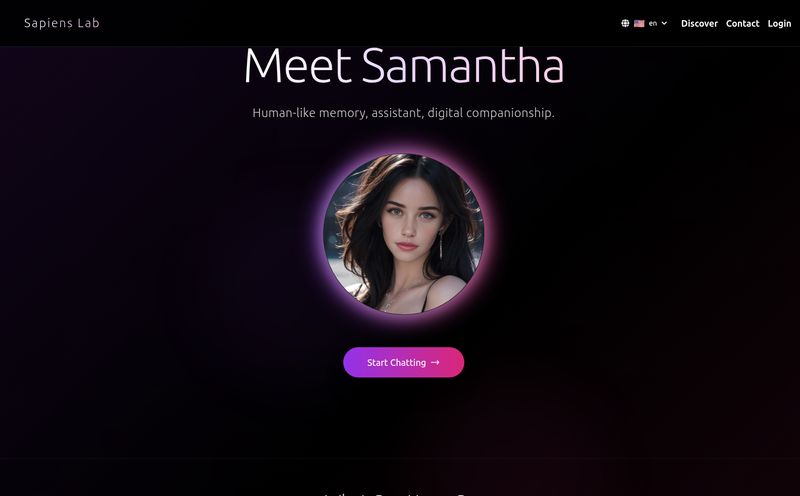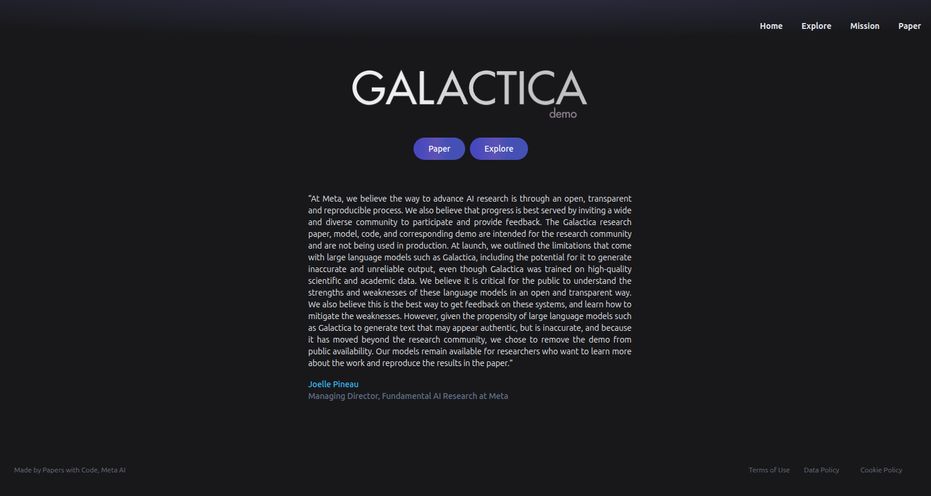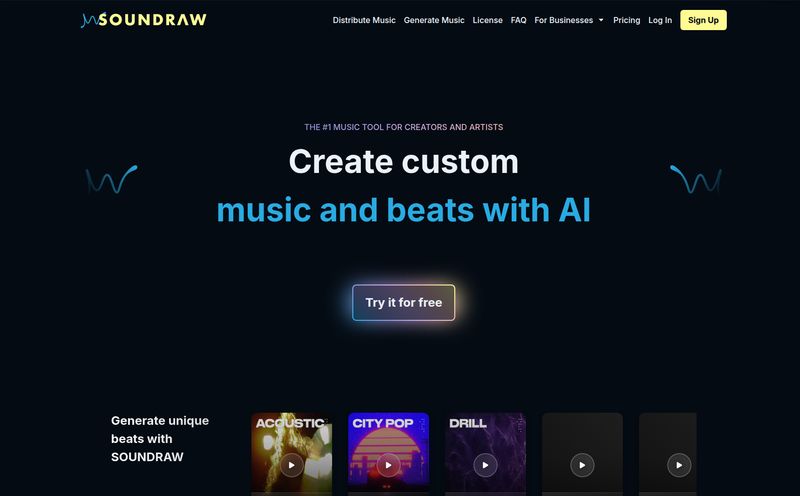Every week, there’s a new tool that can spin up a surprisingly catchy sea shanty about your cat or a full-blown orchestral piece from a single sentence. It’s exciting. It’s a bit chaotic. And, if you’re a developer or a brand playing in this space, it’s absolutely terrifying from a legal standpoint.
The big, scary monster under the bed for every generative AI company is copyright. The whole “scrape the internet and ask for forgiveness later” model is a ticking time bomb. We’ve seen it with images, we’re seeing it with text, and music is arguably the next big battleground. It feels like the Napster-era all over again, but this time the stakes are even higher.
So, while everyone is rushing to build the next viral music generator, I’ve been more interested in the companies building the infrastructure. The ones selling the picks and shovels in this new gold rush. And that’s what led me down the rabbit hole to a company called Rightsify and their intriguing platform, Gramosynth.
What Exactly are Rightsify and Gramosynth?
At its core, Rightsify is trying to solve the single biggest headache for AI music developers: sourcing legally clean, high-quality data to train their models on. Instead of feeding your AI a questionable diet of copyrighted material scraped from the web, Rightsify offers a fully licensed, all-you-can-eat buffet of music data. It’s the difference between building your house on solid bedrock versus a sketchy patch of quicksand.
They basically have two main offerings that work together:
- Rightsify: This is their massive library of human-created music. We’re talking over 12 million tracks (according to their site) that are fully cleared for AI training and other commercial uses. This is where you get the nuance, the soul, the weird little imperfections that make music feel human.
- Gramosynth: This is where things get really interesting. Gramosynth provides synthetic music datasets. It’s music made by AI, for AI. This data is born clean, with no copyright history whatsoever, making it an incredibly safe foundation for building next-generation models.
This isn't just a nice-to-have; it's becoming a must-have. Building a commercial AI model on copyrighted data in 2024 is like playing Russian roulette with your company’s future.
The Gramosynth Flywheel is Genuinely Clever
Tech companies love talking about “flywheels,” and most of the time it’s just fancy marketing speak. But the “Gramosynth Flywheel” they show on their site actually makes a ton of sense. The idea is that better data leads to better AI models. Those improved models can then be used to generate even higher-quality, more diverse synthetic datasets. This continuous loop means the data library is always improving, which in turn helps developers build more differentiated products without the constant fear of lawsuits.

Visit Rightsify
It’s like a sourdough starter for AI music. You begin with a strong, clean base, and the more you use it and feed it, the more complex and unique your own creations become. You're not just licensing a static library; you’re tapping into an ecosystem that’s designed to self-improve. I've seen a lot of pitches, and this one feels less like a sales pitch and more like a smart, sustainable strategy.
The Two Flavors of AI Music Data
Human-Curated Collections for that Human Touch
There's an undeniable magic to human-made music. The slight waver in a singer's voice, the almost-imperceptible rush of a drummer speeding up in the chorus... that's the stuff AI struggles with. By training a model on Rightsify's vast human-created library, developers can infuse their AI with a bit of that soul. It’s the data that teaches the machine about emotion, structure, and the beautiful, messy art of making music.
Gramosynth's Synthetic Datasets for a Clean Slate
Then you have the synthetic side. At first, the idea of using AI-made music to train an AI sounds a bit… sterile. But the genius of it is in its legal purity. A synthetic dataset has no history. No angry artists, no complicated publishing rights, no decades-old sample clearances to worry about. It's a completely blank canvas. For large companies where risk management is everything, this is a massive deal. It's the ultimate future-proofing for your AI stack.
So, How Do You Actually Get Started?
The process seems refreshingly straightforward, especially for a B2B platform. The website breaks it down into three steps: Request Access, Build, and Deploy. The most telling detail for me, as someone who’s seen my fair share of clunky enterprise software, was the mention of simple integration. They literally show code snippets like pip install gramsoynth. This tells me they're speaking directly to developers, not just to suits in a boardroom. They understand that for a tool to be adopted, it has to be easy to implement.
Let's Talk About the Elephant in the Room… The Price.
Okay, so here’s the part where my journalistic instincts kicked in. I went looking for the pricing page, you know, as you do. And what did I find? A big ol' 404 error page. Classic.
Now, what does this mean? Almost certainly, it means Rightsify operates on a “contact us for a quote” model. This is super common for enterprise-grade tools and services. On one hand, it allows them to create bespoke packages for different clients—a giant AI lab has different needs than a smaller app developer. On teh other hand, it’s a bit frustrating for people who just want a ballpark figure. I’ve always felt that a little transparency goes a long way, but I get the business reasons behind keeping pricing under wraps. It signals that this is a serious tool for serious projects.
Who is This Really For?
Based on the enterprise-level solution and the lack of public pricing, it’s safe to say Rightsify isn't for the weekend hobbyist trying to generate a funny song for their D&D group. This is aimed squarely at:
- Major AI Labs: Companies at the forefront of generative model research.
- Established Brands: Any big company looking to integrate unique, legally-safe audio into their apps, ads, or products.
- Serious Startups: Well-funded startups in the music tech space who need to build their product on a foundation that won't crumble under legal pressure.
The alternative, for now, remains the wild west of data scraping. But as the industry matures and the lawsuits pile up, I suspect more and more serious players will be looking for a sheriff like Rightsify to bring some order to the chaos.
Frequently Asked Questions about Rightsify
Is Rightsify's music data truly copyright-cleared?
Yes, that's their entire value proposition. They state that their human-created library is fully licensed for AI training, and their Gramosynth data is synthetic, meaning it was created by AI and has no pre-existing copyright attached to it.
What's the difference between Rightsify and Gramosynth?
Think of Rightsify as the parent company and the source for licensed, human-created music data. Gramosynth is a specific product under the Rightsify umbrella that provides synthetically-generated music datasets, which are created by AI for maximum legal safety.
Can I use Rightsify for a small personal project?
It's unlikely. The platform is structured for enterprise and large-scale commercial use. The lack of public pricing and the “Request Access” model suggest they are focused on B2B clients rather than individual hobbyists.
What kind of music genres are available?
While their site doesn't list every genre, it mentions a diverse range of datasets. Given their library size of over 12 million human-made tracks, it's safe to assume they cover a very wide spectrum of musical styles to ensure models can be trained on varied inputs.
Why is synthetic data important for AI music?
Synthetic data is crucial because it's inherently free of copyright entanglements. It allows developers to train models on vast amounts of data without the legal risk of using protected works. This leads to more robust and legally defensible AI products.
How do I get access to the Gramosynth datasets?
According to their website, the first step is to request access through their platform. This will likely initiate a conversation with their team to understand your needs and set you up with the appropriate data and licensing.
Final Thoughts: Is This the Future of AI Music Training?
Look, the generative AI space is messy, and it's going to get messier before it gets cleaner. Companies that build their empires on shaky data foundations are going to face a reckoning. It's not a matter of if, but when.
A solution like Rightsify feels... inevitable. It’s the mature, responsible, and frankly, business-savvy way to approach AI development. By providing a clean, ethical, and powerful source of both human and synthetic data, they’re not just selling a product; they're selling peace of mind. And in the chaotic world of AI, that might be the most valuable commodity of all.
Reference and Sources
- Rightsify Official Website
- The Verge: The messy legal battle over AI-generated music and copyrighted songs



